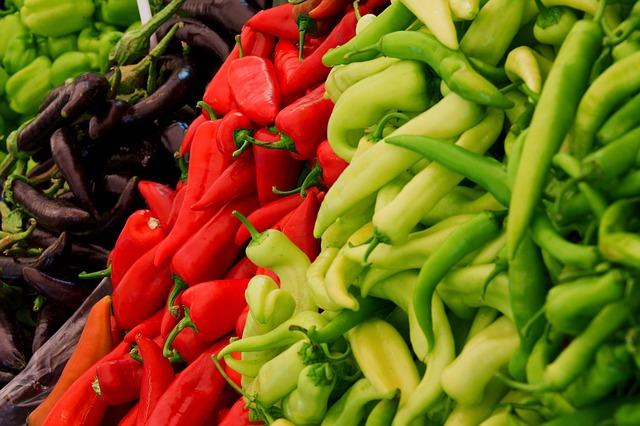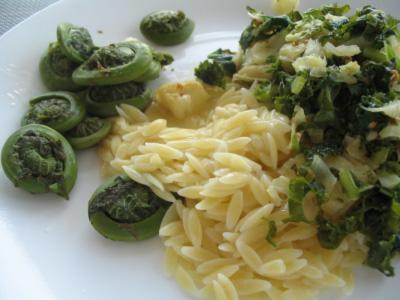People often share with me their stories of memorable events that spur them on in their Buddhist practice: a dharma talk from a special teacher, a helpful meditation class, a book they read, or trip made to a Buddhist place. These inspirations punctuate their otherwise busy lives where battling stress and common worries are the normal wobbles in their mental condition. The question they ask a lot is, “how can I apply Buddhist practice in my everyday life?” They long for something more to calm their pace and redefine their view.
Well, what about the simple things that seem mundane compared to the special times? It is surprising to discover a wisdom nugget might be right there, present each day in our daily life.
I am a western person working in a Chinese office. Most of the time, this is regular business shared in friendly camaraderie. We do however differ at lunchtime when facing the cultural divide of nourishment. Although ‘food’ is a common human need, it comes in varieties and degrees of familiarity (or not). What is ‘comfort food’ to a Chinese person in Hong Kong is not necessarily what I may recognize in my cumulative powers of memory and understanding.
The old lunch cook who prepared the daily staff meals had a big smile that lit up her cheerful face. She shopped the local markets and prepared the vegetarian menu with a range of buffet items, always complimented by soup, which is a Chinese custom. No matter the weather or temperature outside, there was reliably a soup on offer. The seasonal ingredients fascinated me in their variety and unfamiliar taste – many of which have no English names in translation.
The largest pot held the daily soup in some shade of cloudy brown with unknown things lurking beneath the surface. The ingredient mix changed on daily whim, and after boiling for hours together, turned into the shades of earthy-colored potage. While the buffet varieties rotated in colorful interest, the soup of the day remained visually “Brown Soup”.
My practice trail began when my colleagues found humor in my naïve response. They patiently guided me through the cultural learning curve of Chinese lunch foods, and shared their family stories and recipe tales. Fear became fun, and strangeness became adventure. Genuine kindness surrounded me; that was the first lesson for me to receive.
Two years ago at a Thich Nhat Hanh retreat, one of the daily practice opportunities was demonstrated in the dining hall. The deep sounds of brass bell initiated our meal service and reminded all to contemplate mindful eating with thanks, appreciation, and meditation:
EATING TOGETHER
Eating a meal together is a meditative practice. We should try to offer our presence for every meal. As we serve our food we can already begin practicing. Serving ourselves, we realize that many elements, such as the rain, sunshine, earth air and love, have all come together to form this wonderful meal. In fact, through this food we see that the entire universe is supporting our existence.
The Buddha, the Awakened One, invites us to enjoy our meal in mindfulness, establishing ourselves in the present moment so that we can be aware of the food in front of us and of the community surrounding us. We eat in such a way that makes peace, joy, brotherhood and sisterhood possible during the whole time of eating.
Memory of this retreat has revised my approach to lunchtime gatherings. It acknowledges the loving efforts from the kitchen and the smiling face of the cook. How often do we ever give a second thought to the hand that delivers our meal, or the kitchen staff that prepares the bounty? The kindness of my colleagues also gave rise to a peaceful calm and thoughtful appreciation that framed the midday meal.
Slowing down and taking pause for nourishment can be a useful practice. Some say, “I don’t eat lunch together with anyone, and fast food is my norm”… Big city pace, skipping meals, and hurry-rush can distort the scene of savory taste. Stress and lack of attention can lead to careless habits and compromising health. Adding a few moments of mindful calm every day to every meal can create a time for restoring balance. This may not seem so special like the memorable events, but cultivating small changes can lead to greater harmony.
Those early days of lunchtime meals from this past year have faded in a blur. My palate adjusted and grew fond of strange and different Chinese flavors, although seaweed taste and I are still not friends. By now, there is companionable routine, peaceful quiet sharing and a mellow enjoyment of the comforting pattern of it all. Sadly, our smiling cook had to leave a few months ago. Her life had changed, and she moved away. That was a rude shock to me, and my love of her Brown Soup. I miss her and the care infused in her daily buffet. The concept of impermanence was a tough lesson to digest that day.
So the next time when people speak again of memorable events and seek inspiration in their fast-paced lives, I will suggest that they can start simply with a meal. These are easy practice moments that occur each day. We may face our colleagues, our family members, and friends on these occasions – every dining time is an opportunity to practice. Start small… try patience… show kindness… remember gratitude… and slow down, into each and every bite. Let the sun shine in your food and try something new with an open heart.
There is a old common phrase that says, “we are what we eat”… if we dwell on that and consider the world around us, then mindful presence during a meal will reflect on our health and well-being.















